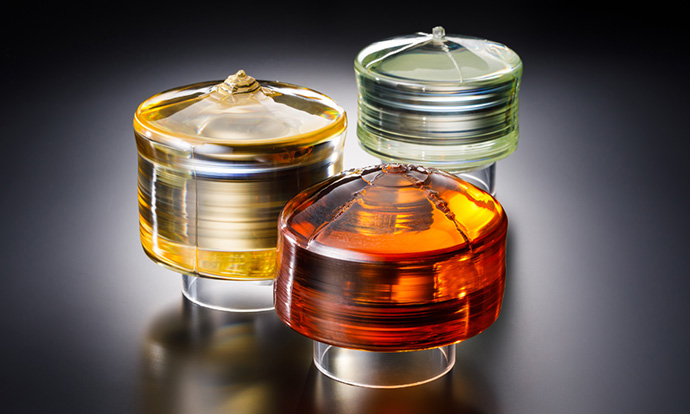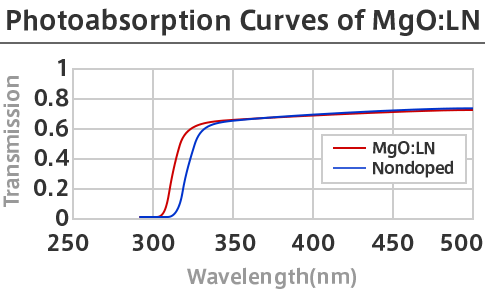Research and Development
Mass production technology of large diameter single crystal.

Lithium Niobate (LN) single crystal and Lithium Tantalate (LT) single crystal are commonly used as the material for SAW filter which uses Surface Acoustic Wave.
These SAW device become a traction force of worldwide demand for LT and LN single crystal, and it help to establish the position to representing oxide single crystals
YCC has begun to develop larger diameter crystal of 5"φ (125mmφ) and 6"φ (150mmφ) with high quality as soon as its required.
We have worked on to improve the crystal growth condition to start mass production of 6"φLN in 1998, and 5"/6"φLT in 2001.
We will keep updating numerous specifications required for larger diameter wafers for next generation smartphones and large capacity high speed communication network era.
Challenge to "next generation photonics materials" guided by highly functional single crystal.
Magnesium doped Lithium Niobate single crystal is drawing an attention as material for wavelength conversion devices, indispensable for next generation of photonics field.
It is well known that we see Optical damage(in other words "Photo-refractive effect") when inserting short-wavelength laser, such as Green or Blue, into Lithium Niobate single crystal
To control those phenomena, we have worked on the development of the material with using Magnesium, which shows efficiency of high durability for optical damage, as dopant
The characteristics required for MgLN would be high durability for Optical damage, less absorption loss, and no fluctuation of refractive index.
YCC has been launched the development of MgLN in 1988. We have optimized the growing condition and improved the purity of raw material to get over the segregation of Magnesium, the big challenge of MgLN.
As the result of the success, we could achieve crystal with no subgrain boundaries(in Z-axis) and improve wavelength dependency of optical transmission to control the scattering factors.
We will keep the effort to seek for further potential of MgLN with creative mind based on our years of experience/know-how.




